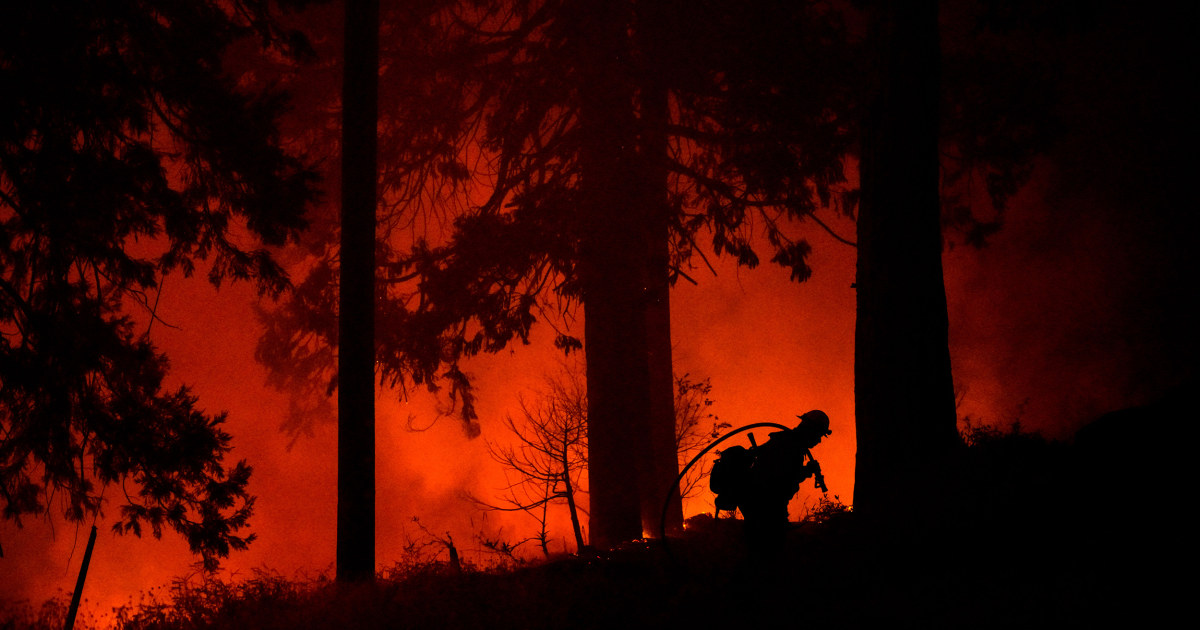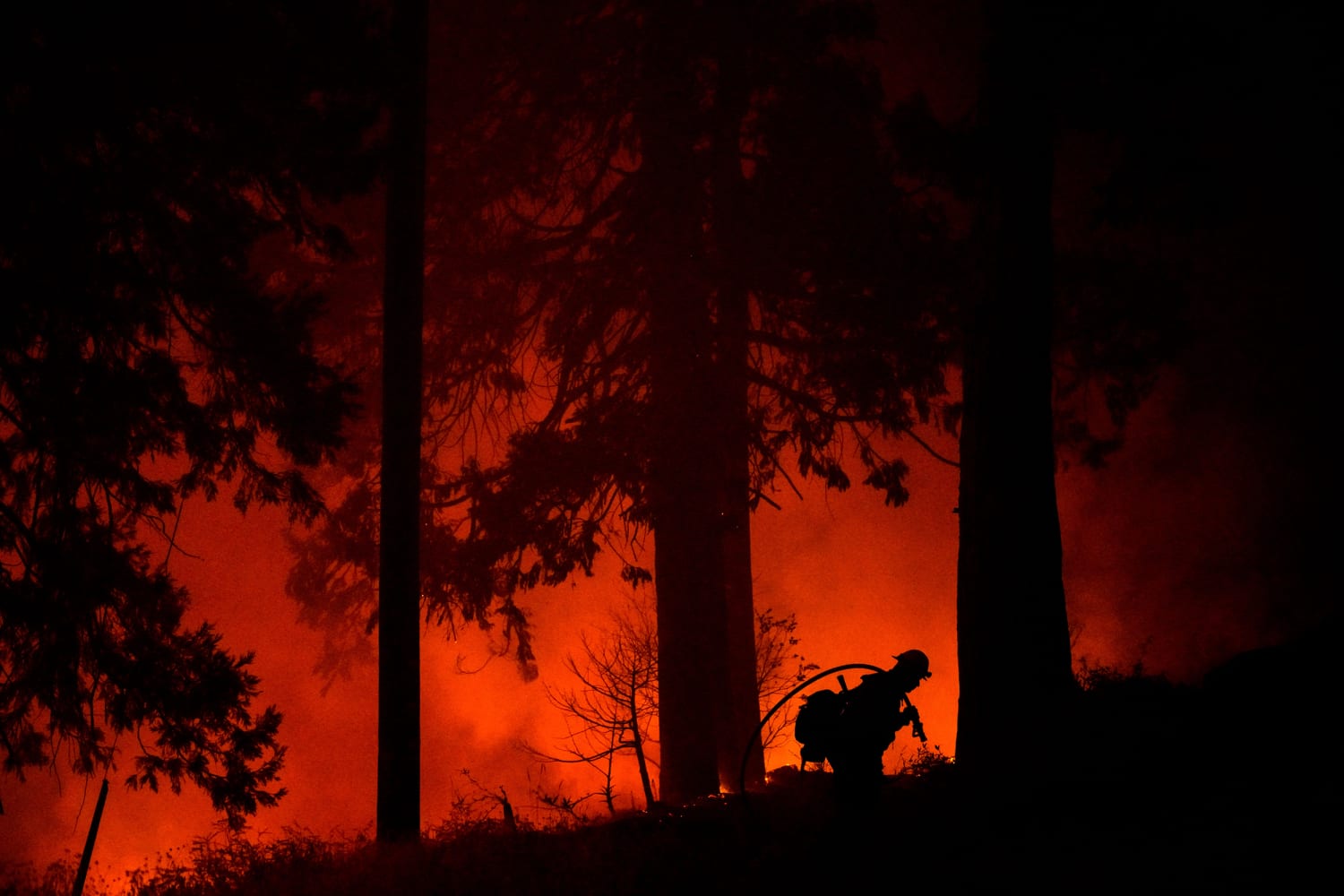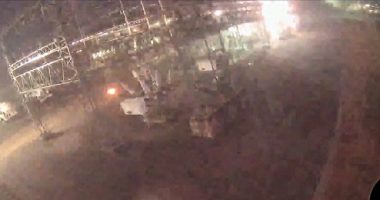
As Western states head into what experts say could be another catastrophic fire season, federal wildland firefighters are faced with staffing shortages amid a worsening drought and an exhausted workforce.
The problem is especially acute in California, where fire activity is already increasing compared to this time last year. Among the most skilled and experienced teams, colloquially known as hotshots, only 70 percent of crews are expected to be fully staffed this year, said the union that represents federal firefighters. In some cases, understaffed fire engines will go unused, some of them at the Lake Tahoe Basin management unit in South Lake Tahoe near Eldorado National Forest.
“It’s an overall loss,” said Ben Elkind, a U.S. Forest Service smokejumper. “You’re going to lose hotshot crews. You’re going to lose smokejumpers. You’re going to lose all the things states can’t provide. If you have a California that doesn’t have a federal workforce anymore, it’s going to affect every state.”
The California Department of Forestry and Fire Protection, or Cal Fire, said the state has had 2,436 fires this year through mid May, compared to 1,554 during the same period last year.
Despite the increased threat, the Forest Service does not expect to meet its goal of hiring 5,200 federal firefighters in California this year.
“It will be below that number,” said Bob Baird, director of fire and aviation management for the Forest Service Pacific Southwest Region. “With hiring challenges and attrition, it could be a lower percentage than that, but we won’t know until we finish our hiring process.”
The gnawing problem of staff shortages has been an ongoing issue for the Forest Service, which classifies firefighters as “forestry technicians” who are not given similar pay or benefits afforded to state, municipal or even utility firefighters. Many are hired as seasonal employees who work six months of the year, often in life-threatening and mentally challenging environments.
Federal firefighters have long complained that they are overworked and underpaid, and some have said they are ready to move on.
“California is ground zero for attrition,” said Riva Duncan, a former Forest Service officer who is the executive secretary of Grassroots Wildland Firefighters, which advocates for federal fire personnel. “We’re losing people at an accelerated rate because there are so many other opportunities.”
Forest Service firefighters’ pay is based on the federal pay scale. Most start at the GS-3 level, at which pay tops out at around $31,000 annually for full-time employees. By comparison, a first-year firefighter with Cal Fire makes nearly twice as much.
Most rank-and-file temporary seasonal workers start at an hourly base salary of about $13 per hour, plus overtime and hazard pay. California’s current minimum wage is also $13, but it is scheduled to increase to $15 an hour by 2023, making state or local agencies a more attractive option in a region where the median home price is more than $800,000, according to the California Association of Realtors.
“California has one of the highest cost of living rates in the country,” said Randy Moore, regional forester for the Forest Service Pacific Southwest Region. “It really presents a real challenge to firefighters.”
Wildfires charred more than 4 million acres across California last year, destroying hundreds of structures and blanketing much of the state in heavy, dense smoke for several weeks. This year, the state is already beset by “acute water supply shortages,” prompting Gov. Gavin Newsom to declare a drought emergency this month for 41 of the state’s 58 counties.
With increasingly worrisome conditions, state and municipal fire departments are beefing up their workforces to prepare for a heightened fire season, offering competitive salaries and benefits that struggling federal firefighters can find hard to resist.
This year, Cal Fire will hire 1,400 more firefighters after Newsom authorized more than $80 million in emergency funds in March to bolster wildfire response efforts. Newsom has also proposed to invest $2 billion in his revised budget for emergency preparedness, including buying firefighting airplanes and helicopters, as well as creating a center to forecast wildfire threats.
According to an internal survey conducted by Grassroots Wildland Firefighters, the most common reason engine crews had vacancies last year was that people were leaving for Cal Fire. Municipal and county departments were also listed as drivers for leaving the Forest Service, followed by job opportunities with Pacific Gas and Electric Co., the utility company that pleaded guilty to 84 counts of involuntary manslaughter for causing the deadly, massive Camp Fire in 2018.
“I couldn’t wait any longer,” said former Forest Service hotshot Aaron Humphrey, who left the federal agency last year and now works for PG&E. “I had to really think some things through, and basically I was at a breaking point.”
Humphrey, who joined the Forest Service when he was 18 years old, said leaving the agency was one of the hardest decisions he has ever made. After 25 years as a hotshot, Humphrey decided that he wanted “another lease on life.”
“All of a sudden, I had kids, and I look at how many years I have left to enjoy with them. I needed to be there to support my wife and to be a parent,” he said.
Another former federal firefighter who works at Cal Fire said he was attracted to his current job as a battalion chief because it allowed him to continue managing his family’s cattle ranch in Northern California while still working to protect the land.
Despite a statewide interagency agreement among departments that oversee wildland, California is ultimately paying the price for a shortage of federal crews, said the battalion chief, who asked not to be named because he was not authorized to speak on behalf of the agency.
“There was a point last summer when we had six Cal Fire teams assigned to five federal incidents,” he said. “Unfortunately, the Forest Service is going to continue to lose staffing until they catch up with the other agencies in California.”
Moore of the Forest Service Pacific Southwest Region said that when federal crews are down, the agency will call in firefighters from other national forests or state agencies. But as wildland fires increase in frequency and intensity, the agency will continue to struggle to catch up with demand.
“In one regard, that’s OK, because it’s still the firefighting community here in California protecting California,” he said. “But … we have to continue to hire new, new, new and then train, train, train. We recognize that here in the Forest Service we need to address some of these issues.”
Source: | This article originally belongs to Nbcnews.com










